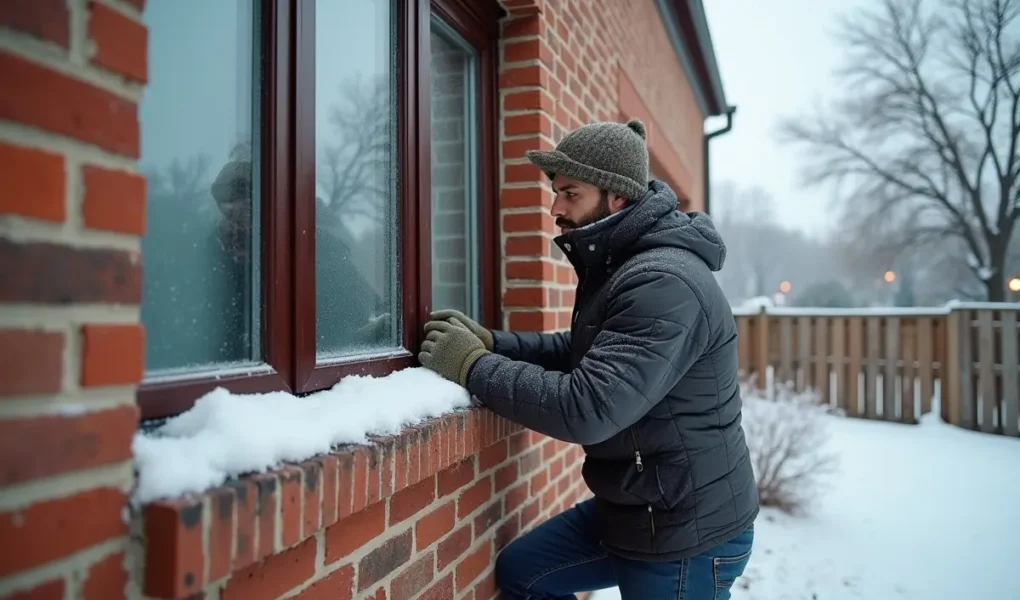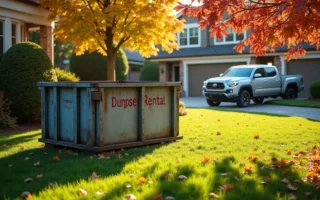As the days shorten and a crisp chill fills the air, winter’s approach signals more than just holiday cheer – it’s a call to action for every home and business owner. Winterizing your brick-and-mortar property isn’t just about comfort; it’s about crucial protection against the harsh realities of freezing temperatures, heavy snow, and strong winds. Neglecting this vital preparation can lead to costly damages, operational disruptions, and a significant drain on your energy budget.
This comprehensive guide will walk you through the essential steps to safeguard your property, from optimizing your heating systems to protecting your landscaping and even ensuring your solar panels are ready for the season. We’ll also sprinkle in some SEO-friendly keywords to help others discover these important tips!
The Foundation of Frost Protection: Exterior and Structural Safeguards
Your property’s exterior is its first line of defense against winter’s onslaught. A thorough inspection and proactive maintenance now can save you a world of trouble later.
Sealing and Insulating the Shell. Drafts aren’t just uncomfortable; they’re energy vampires, allowing precious heat to escape and cold air to infiltrate. Start by inspecting all windows and doors for gaps, cracks, or worn weatherstripping. Apply new caulk where needed and replace any damaged stripping. For the foundation, examine it for any cracks or openings. Seal these with a high-quality sealant to prevent moisture intrusion and pest infestations. Proper foundation sealing is key to preventing freeze-thaw cycles from exacerbating existing damage.
Managing Water Runoff. Clogged gutters are a winter disaster waiting to happen. Accumulated debris prevents proper drainage, leading to ice dams, damaged fascias, and potential water damage to your roof and foundation. Remove all debris from your gutters and downspouts and ensure they direct water at least five feet away from your foundation. After clearing, check for any leaks or loose sections and reinforce them.
Roof Resilience. Your roof takes the brunt of winter weather. A compromised roof can lead to leaks, insulation damage, and structural problems. Conduct a visual inspection from the ground for missing, cracked, or loose shingles, and check for damaged flashing around chimneys and vents. Addressing roof issues now is far more cost-effective than dealing with a leak during a snowstorm.
Inside Out: Heating and Energy Efficiency
Winterizing isn’t just about preventing damage; it’s also about optimizing your heating systems for maximum efficiency and comfort.
Boiler Brilliance and Furnace Focus. For properties relying on boilers, annual maintenance is non-negotiable. Schedule a professional boiler service before the cold weather sets in. Technicians will inspect and clean components, check pressure, and identify any potential issues. This can significantly improve boiler efficiency and prevent costly emergency repairs. Don’t forget to insulate exposed pipes in unheated areas (basements, crawl spaces) to prevent freezing and improve heat retention. Similarly, if you have a forced-air furnace, change your filters regularly—especially before winter—and consider a professional tune-up for your entire HVAC system. A programmable or smart thermostat can further optimize your system, saving energy when your property is unoccupied.
Solar Panel Preparedness. Even though they harness sunlight, solar panels require some winter consideration to maximize their performance and longevity. Ensure your solar panels are clear of leaves, dirt, and other debris. While most residential solar panels are designed to shed snow naturally, heavy, prolonged snowfall can reduce output. Never climb on your roof to clear snow yourself; consult with your solar panel installer for safe removal methods if necessary. Monitor your system’s output: a sudden, unexplained drop could indicate an issue that needs addressing, which is crucial for maximizing solar energy output and sustained energy savings.
The Green Guard: Landscaping and Outdoor Amenities
Your landscaping isn’t just for curb appeal; it’s an investment that needs protection from winter’s wrath.
Winter Landscaping Essentials. Your outdoor plants and trees need special attention to survive the freezing temperatures and heavy snow. Prune dead or weak branches from trees and shrubs. These can break under the weight of snow or ice, potentially damaging your property or becoming a hazard, making it a key aspect of winter landscaping maintenance. Even in winter, evergreens and newly planted trees/shrubs need water until the ground freezes solid. Apply a thick layer of mulch around the base of sensitive plants, trees, and perennial beds to help regulate soil temperature and retain moisture.
Protecting Hoses and Sprinklers. The number one cause of burst pipes during winter often involves outdoor water sources. Disconnect all garden hoses from exterior spigots. If you have an in-ground sprinkler or irrigation system, it must be properly drained or “blown out” by a professional to ensure no water remains in the lines, which would freeze and rupture the pipes. Finally, shut off the water supply to all exterior spigots using the interior shut-off valve, and then open the exterior spigot to drain any remaining water.
Outdoor Furniture and Fixtures. Bring in or cover any outdoor furniture, planters, and decorative items. Fountains and ponds should be properly drained and covered, following the manufacturer’s winterizing instructions to protect pumps and prevent structural cracking.
The Final Checks: Staying Safe and Prepared
Winterizing is a holistic process that includes emergency preparedness.
Pest Control. As the weather cools, rodents and insects look for warm shelter. Seal entry points, clear debris piles (like wood stacks or excess leaves) that can provide cover, and consider placing rodent bait/traps in non-public areas like attics and basements.
Emergency Kit. Assemble a winter emergency kit for your home or business. This should include flashlights, extra batteries, a first-aid kit, blankets, bottled water, non-perishable food, and a manual for your heating system, in case of a power outage.
Insurance Review. Contact your insurance agent to review your policy. Ensure you have adequate coverage for common winter hazards, such as frozen pipes, ice damage, and snow load on your roof. Knowing you’re covered provides essential peace of mind.
By taking these proactive steps, you are not just preparing your brick-and-mortar property for the cold; you are protecting your investment, ensuring lower utility bills, and avoiding the stress and cost of emergency repairs. Start your winterization checklist today—your future self will thank you!




